Buoy Chain
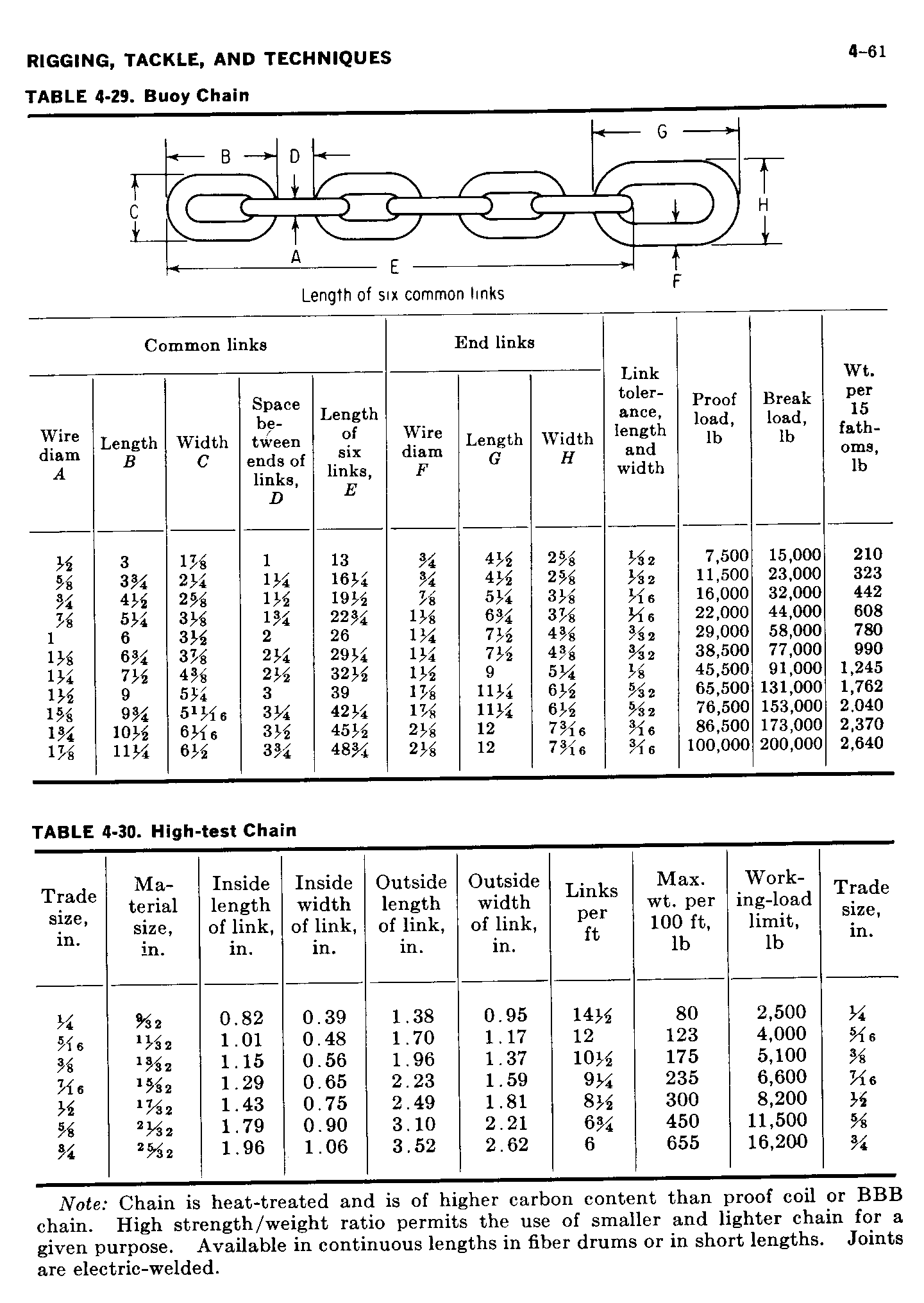
Stud-Link Chain
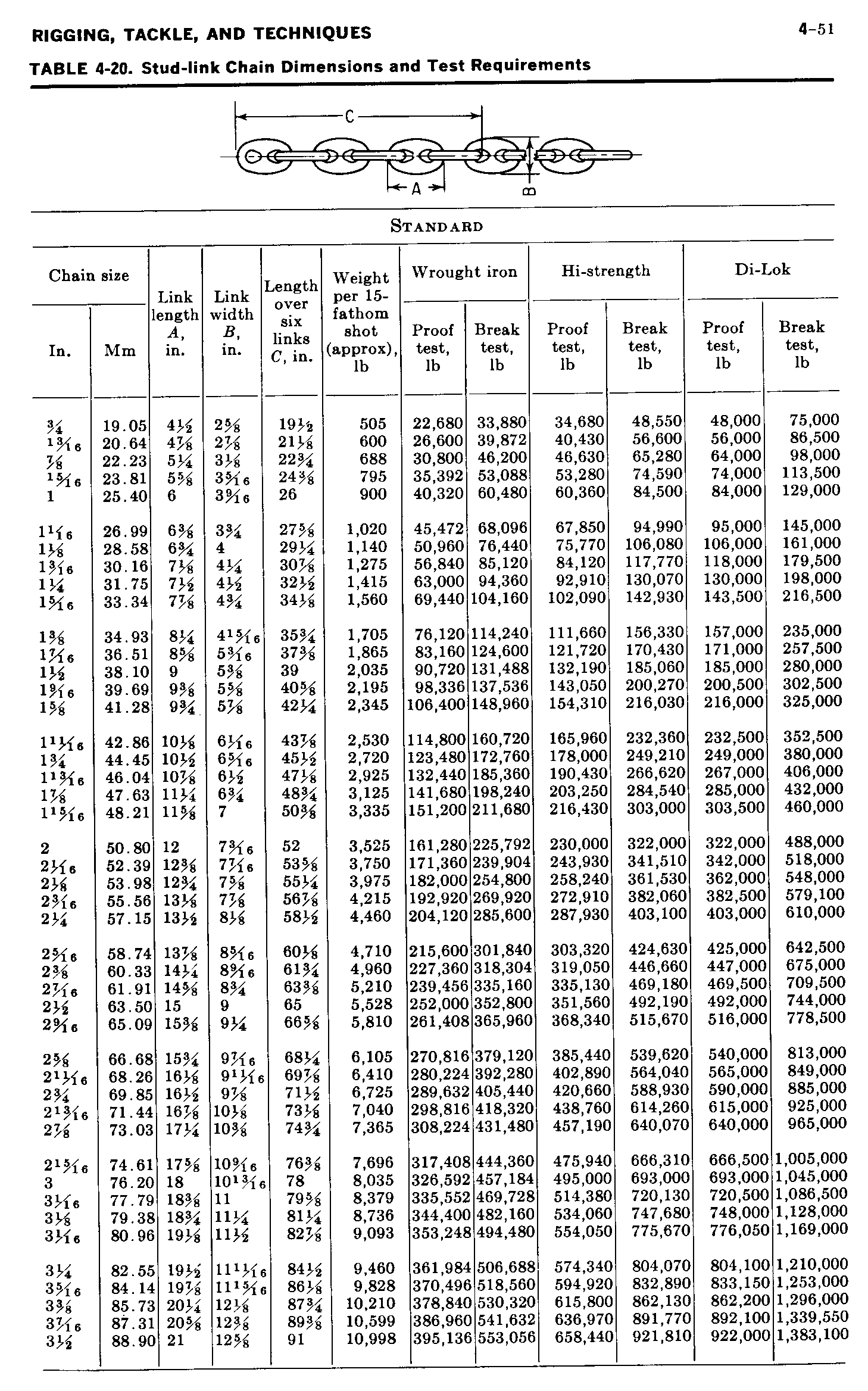
Links and Rings
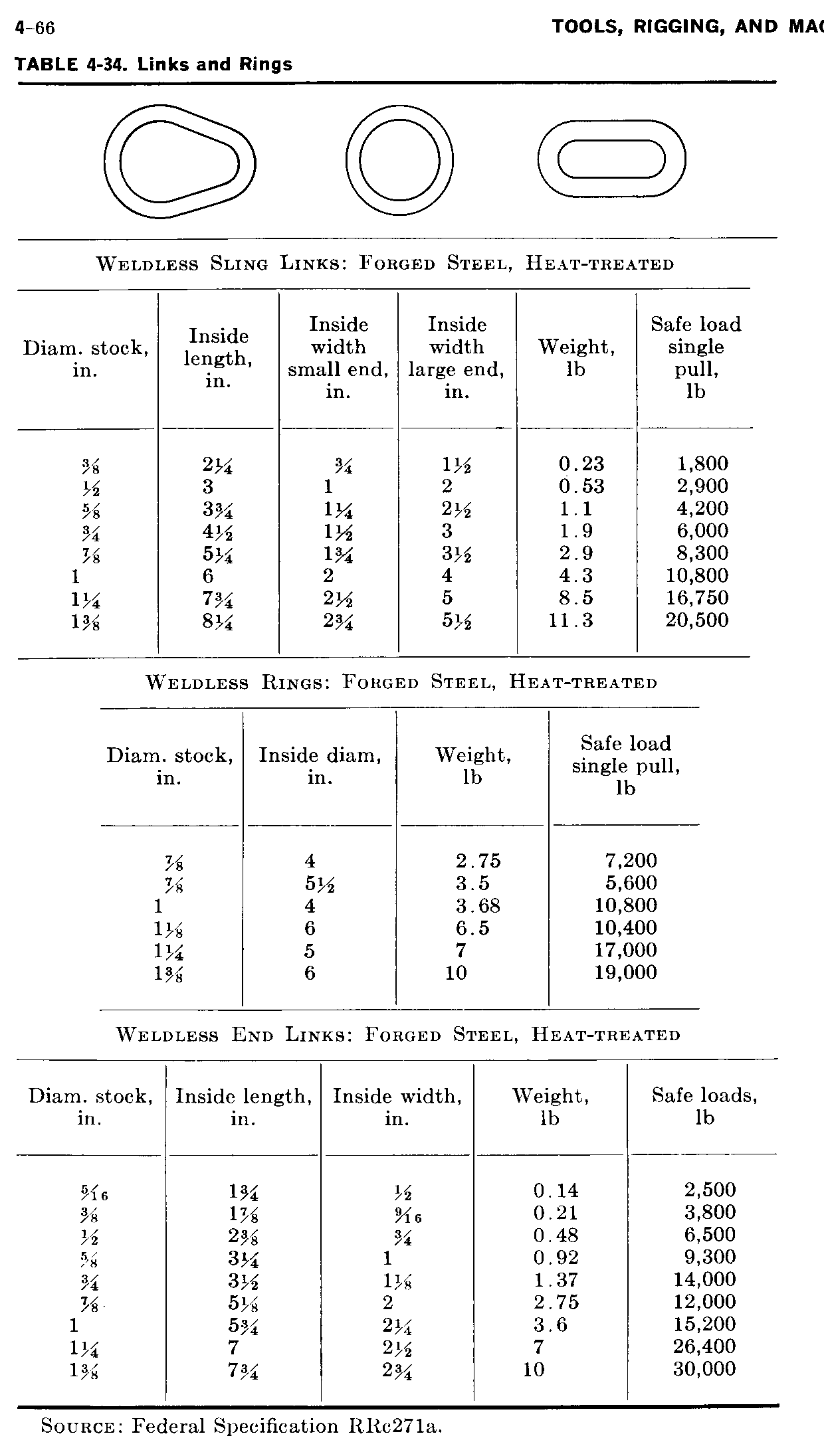
Safety and Nut Shackles
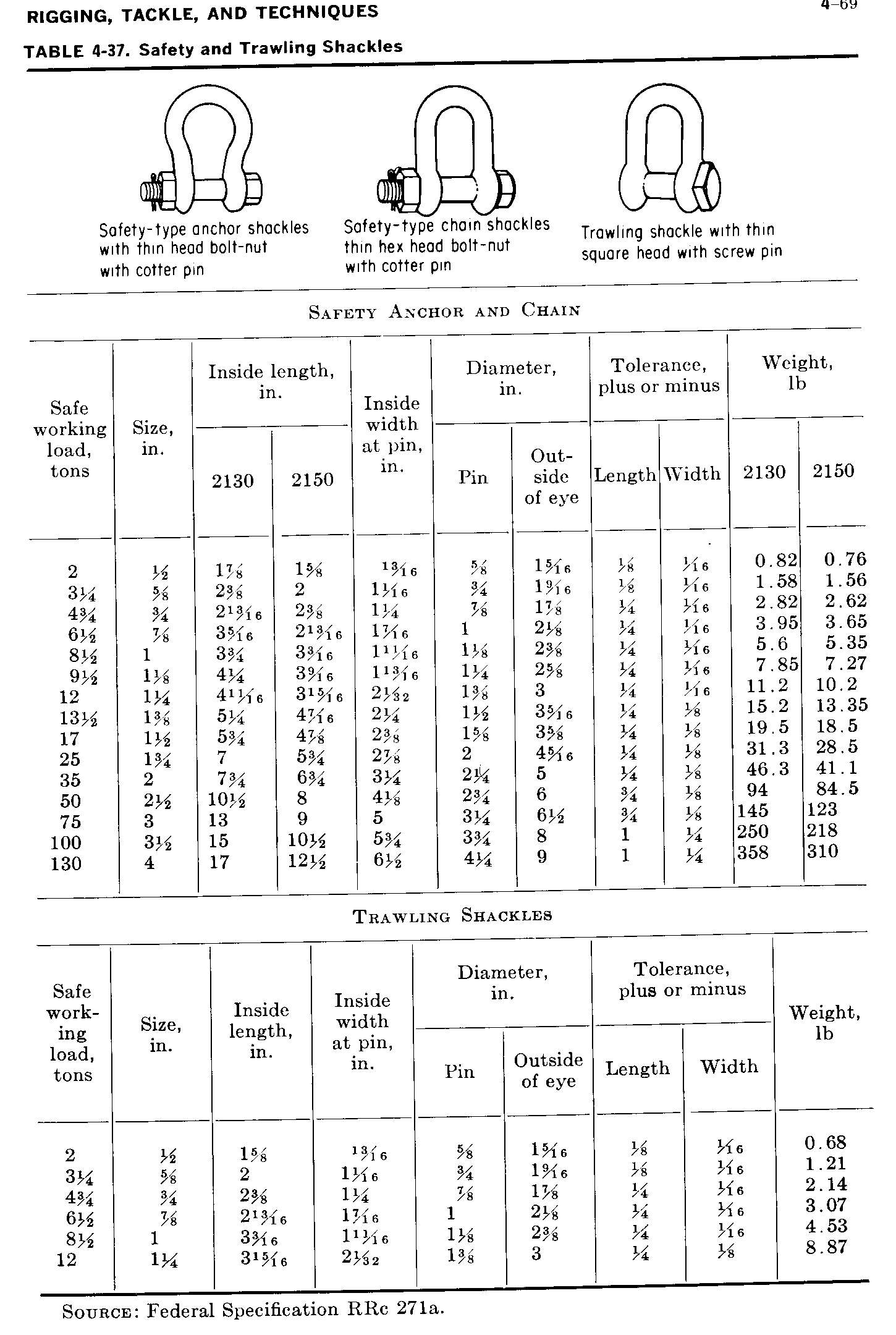
Screw Shackles
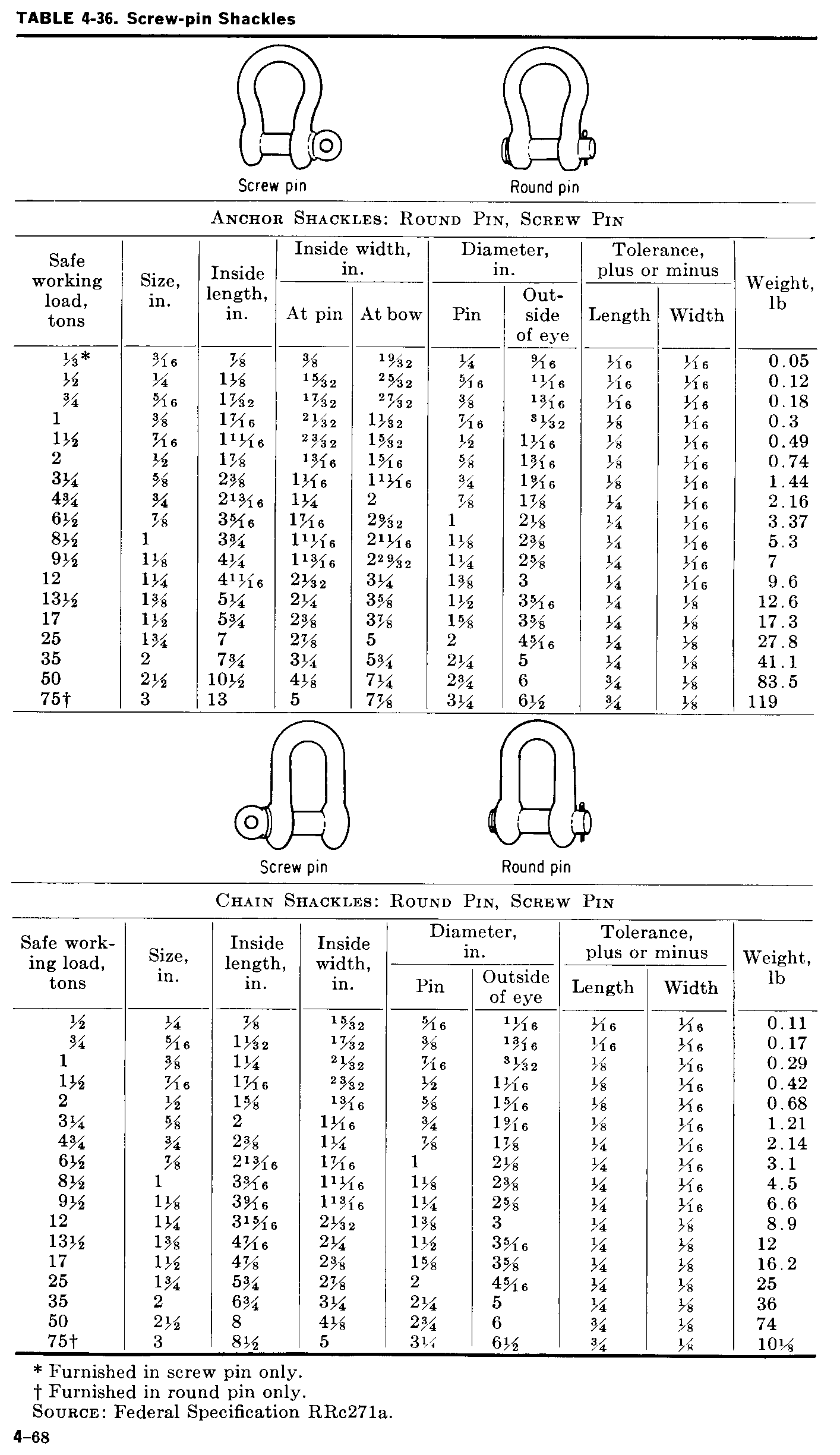
The following images where scanned from Myers, Holm and McAllister's Book "Handbook of Ocean and Underwater Engineering". They are reproduced here for the benefit of designing oceanographic moorings using the Mooring Design and Dynamics package for MATLAB. The information is provided to assist in determining the size, weight, and strength characteristics of various steel chains, shackles and joiners. The conversion from lb. (pounds) to kg is 1 kg = 2.2046 lb, and steel retains approximately 87% of it's weight (buoyancy) in seawater. Therefore a 20 lb length of chain weighs 20/2.2046=9.072 kg in air, and 9.072*0.87=7.91 kg in seawater. Since it is heavier than seawater, we would assign it a negative buoyancy of -7.91 kg.
Mooring Design and Dynamics wants mass/lengths of chain and wire to be entered as the buoyancy per unit meter of length. For example, in the table for buoy chain, the weights are given in pounds (lb) per 15 fathoms of length, which equals approximately 27.432 m (6ft = 1 fathom = 1.8288m). So for 1/2 inch buoy chain, with a weight of 210 lb per 15 fathoms, the buoyancy per unit metre is: -210[lb/fthm]/27.432[m/fthm] = -7.6553[lb/m] /2.2046[lb/kg] = -3.4724[kg/m] *0.87 = -3.021[kg/m], where steel retains about 87% (*0.87)of it's mass submerged in seawater.
Finally, the following gif images and this HTML document may NOT print well from browsers, in that the page breaks can not be controlled.
If you have any questions, please contact me at RDewey@uvic.ca




